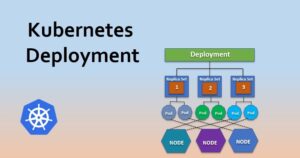You have a brilliant business idea. Before investing significant time and money into turning this idea into a reality. It is critical to validate whether it can work and be profitable. A thorough market analysis, prototype creation, customer survey, and operational feasibility assessment are the steps in testing a new idea. A good process identifies flaws, identifies potential obstacles, and validates assumptions before going all in.
Evaluate market potential
- Industry profitability, growth trends, and total addressable market size
- Competitor offers, customer traction, and market share
- Underserved niches and customer pain points
- Macro trends and market forces impacting the space
Evaluate if the market is growing with enough room for new entrants to gain a share. Talk to prospective customers about their biggest frustrations. Determine if there is a genuine unmet need your idea could reasonably fulfill. Ideally, target newer or rapidly growing markets with low barriers to entry. Validate that launching would capitalize on positive momentum instead of trying to force adoption.
Create customer personas
Map out detailed buyer personas your ideal target prospects segmented by demographics, behaviors, needs, and pain points. Give personas a name, photo, background, motivations, and quotes to humanize them. Outline their exact frustrations and goals. Highlight what matters most to them in solutions. Fleshing out detailed personas allows you to tailor your idea and messaging to resonate with their priorities. It also reveals which market segments present the most compelling opportunities worth pursuing. Validate personas through surveys, interviews, focus groups, and examining competitors’ existing audiences. Adjust based on real data to maximize how uniquely suited your solution is to fulfilling each persona’s needs.
Make a minimum viable product
A minimum viable product (MVP) is a stripped-down prototype focused solely on testing the core features, technology, design, and user workflow required to validate your idea. An MVP is not the final product, just a testable version with enough implementation to get customer feedback. It should focus strictly on the functionality required to demonstrate the value proposition and solve the core customer problem. Build your MVP through wireframes, mockups, landing pages, concierge/wizard of Oz delivery, basic prototypes, etc. Look for easy shortcuts to simulate functionality vs coding everything from scratch. The goal is simply to create something good enough to start gathering customer data and feedback as quickly and affordably as possible. Making an MVP also crystallizes which solution elements are vital vs unnecessary. The best site for starting a small business is this one.
Survey prospective customers
Armed with your MVP, survey target prospects to test overall appeal, willingness to pay, and perceived value. Develop a questionnaire or conduct interviews to get feedback on:
- Overall interest level
- Strength of value proposition
- Benefits of key features
- Concerns about the solution
- Suggested modifications
- Acceptable price points
Gauge genuine excitement versus lukewarm reactions. Let customers shape refinements to maximize product-market fit.
Evaluate operational feasibility
- Legal entity formation, IP protections
- Employee hiring needs and costs
- Operating expenses like office space, equipment, software
- Startup funding requirements and financing options
- Marketing and distribution channels
- Projected profit and loss, cash flows, and ROI
This business plan tests if your idea can realistically scale into a functioning, profitable company. Gauge operational bandwidth and capital required. Refining the business plan will expose flawed assumptions and risky projections. Better to adjust expectations now instead of mid-launch.



